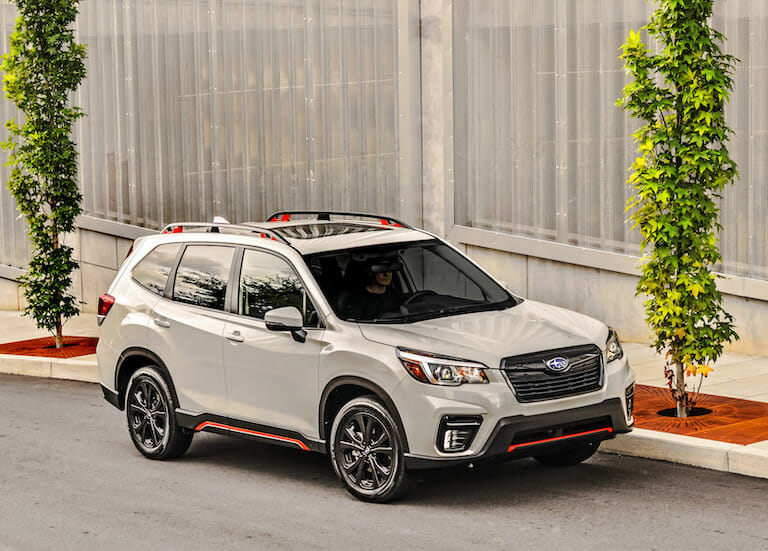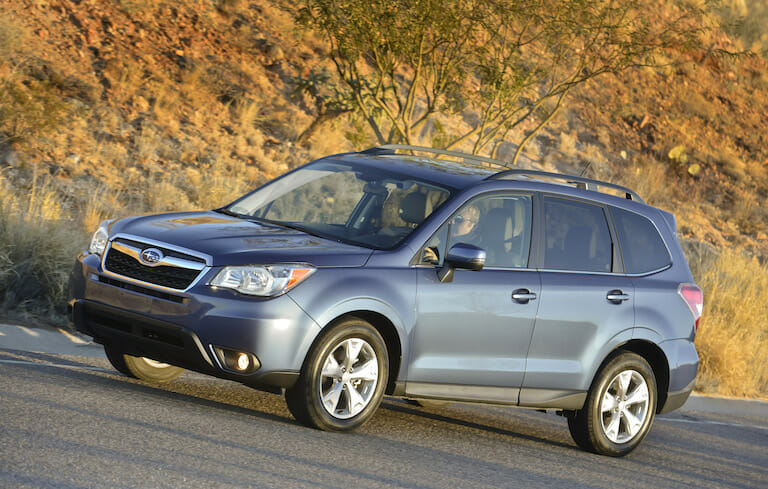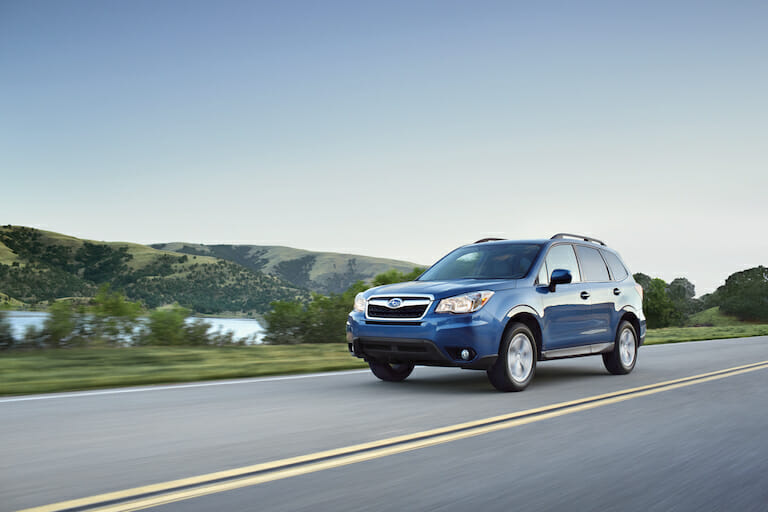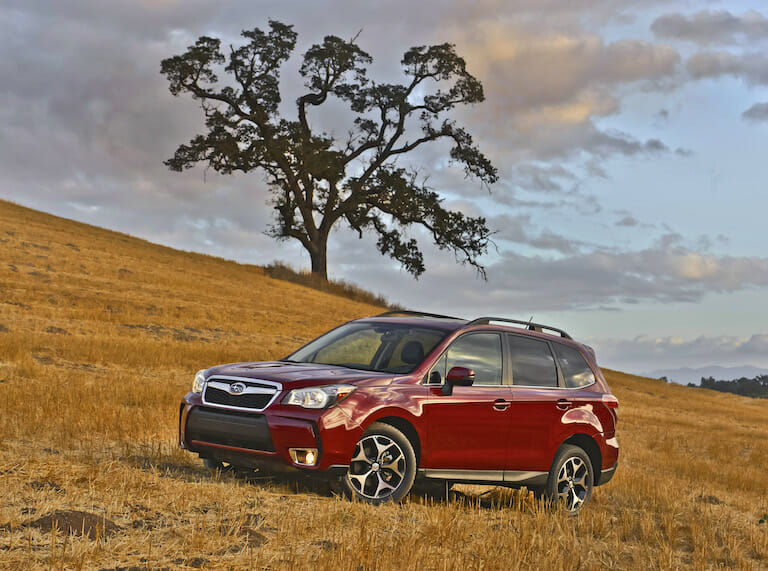The Subaru Forester has impressed owners with its durability since its 1998 debut, with many of the machines lasting up to 200,000 miles or longer. However, changes to the popular Boxer engine and the introduction of a CVT in 2014 resulted in complaints, lawsuits, and a disenchanted customer base.

Key Points
- The first to third-generation Subaru Forester dazzled drivers and experts with projected 200,000-mile durability.
- Changes to the iconic Boxer 2.5L engine in 2014 earned a fleet of customer complaints due to excessive oil consumption and expensive repairs.
- The 2014 also introduced a noisy CVT as an option to the rock-solid manual transmission. It frustrates owners with noise, vibrations, and sluggish performance.
- The long-term damage caused by the faulty designs in the engine and transmission leaves lingering questions regarding the future longevity of the Subaru Forester.
- Strict adherence to maintenance schedules and performing a thorough check on any used Subaru Forester is your best bet to get a long-lasting all-wheel-drive vehicle.

Over its 24-year History, the Subaru Forester Earned a Reputation as an SUV Able to Last 200,000 to 300,000 Miles
Since 1998, the Subaru Forester has enjoyed an impressive reputation among its loyal owners. Even the first models were known to last up to 300,000 miles. That early success should indicate that today’s generation can be relied upon to soar past 200,000 miles. It may even keep rolling up to 15 years when you stay current with its maintenance.
Reader’s Digest listed it as a Car Guaranteed to Last Over 250,000 miles. Drivers of the popular all-wheel-drive SUV noted their positive experiences with J.D. Power, awarding the Forester a great reliability rating every year since 2010, except for the problematic 2014 and 2015 versions.
What does it mean when we say it will last that long? Generally, you should not have to pay for significant repairs to the engine, transmission, or structural frame during the lifetime of the vehicle. Owners will need to complete routine maintenance and replace standard wear and tear items.
However, before you go out and grab the last Subaru Forester on the lot, you need to look into any potential problems associated with various model years.

An Oil-eating Engine and Loud CVT Bring the Reliability of the 2011 to 2018 Model Years into Question
After researching the past 12 years of Subaru Forester models, it is clear that the 2014 and 2015 Subaru Forester represent the most problematic years. They gathered the highest number of complaints at the National Highway Traffic Safety Administration.
The 2014 model introduced a mid-generation refresh for the Forester, and it included a new 2.5i Boxer engine. Soon owners reported excessive oil consumption between scheduled service intervals, as cited in our own article, “Is the Subaru 2.5 a Good Engine?”
Some drivers saw up to a quart or more burned off every 5,000 miles. Low oil levels resulted in damage to exhaust valves, piston heads, and rings. In some instances, the short block required replacement.
A class-action lawsuit settled in 2016 extended the warranty on the 2.5L engine found in the 2011 to 2015 Subaru Forester. It also covered all applicable repairs due to the oil consumption.
It did not result in the removal of these engines from the road. So, the now-aging ride may suffer an unanticipated failure due to damage incurred earlier in its life.
Another common complaint associated with the Subaru Forester refers to the continuously variable transmission featured on the 2018 model. While the CVT first appeared in 2014, it wasn’t until 2018 that drivers voiced their concern regarding a loud whine, shuddering under acceleration, and sluggish performance.
Enough owners filed complaints that Subaru extended the warranty for the CVT for up to 10 years. It includes free repair or replacement if a problem is diagnosed. Will this lead to an early detonation of the powertrain? That is simply unknown.

Routine Visits to the Service Center Every 6,000 Miles or Six Months Help Prolong the Life of the Subaru Forester
Enthusiastic owners of the SUV agree with the experts in the Subaru Forester chat forum that rigorously maintaining your SUV is the magic ingredient when you want it to last 200,000 miles or more.
The maintenance schedule for the mid-size SUV recommends that you bring it into a qualified service center every 6,000 miles or six months for an oil change and inspection. The technician will check the tires, brakes, belts, and suspension.
They will also test the CVT fluid. If it becomes cloudy or gritty, it is time to switch it out.
Items that you can expect to replace on a high-mileage SUV that you may not have changed on a newer vehicle include the clutch, brake fluid, drive belt, and hoses for your coolant system.
Repair Pal calculates the annual cost of maintenance and repairs on a Subaru Forester to be around $632. This is slightly lower than the average vehicle.
Ultimately, even a major transmission or engine repair on a ten-year-old vehicle can be a smart use of your money compared to splurging on a new car. Especially if you expect it to survive another five to seven years.
Question the Projected Longevity of a Fourth-generation Subaru Forester when Searching for Your Next SUV
If a Subaru Forester built before 2011 made regular trips to the service center, it has a good chance of staying on the road a while longer.
However, the questionable 2.5L engine found on the 2011 to 2015 model and a shuddering CVT added in 2014 brings some serious doubts to the table.
Will the Subaru Forester continue to stand up to its reputation as a long-lived AWD SUV or start to suffer from serious mechanical issues? For the fourth generation at this point, we just don’t know.
You will need to take any potential purchases on an extensive test drive and do a deep dive into its repair history before making your decision. The fifth-generation model that debuted for 2019 so far enjoys a fairly pristine reputation.
Photos: Subaru
